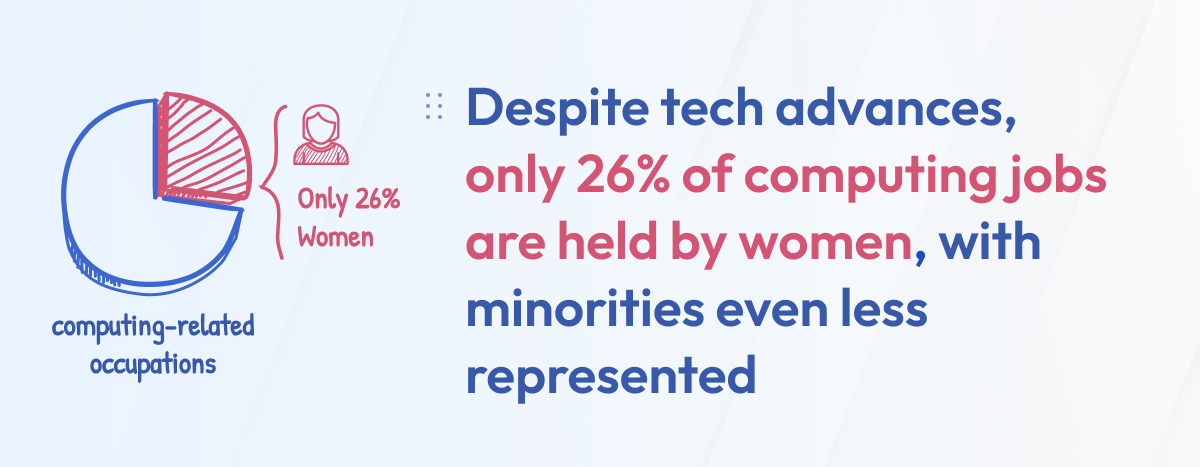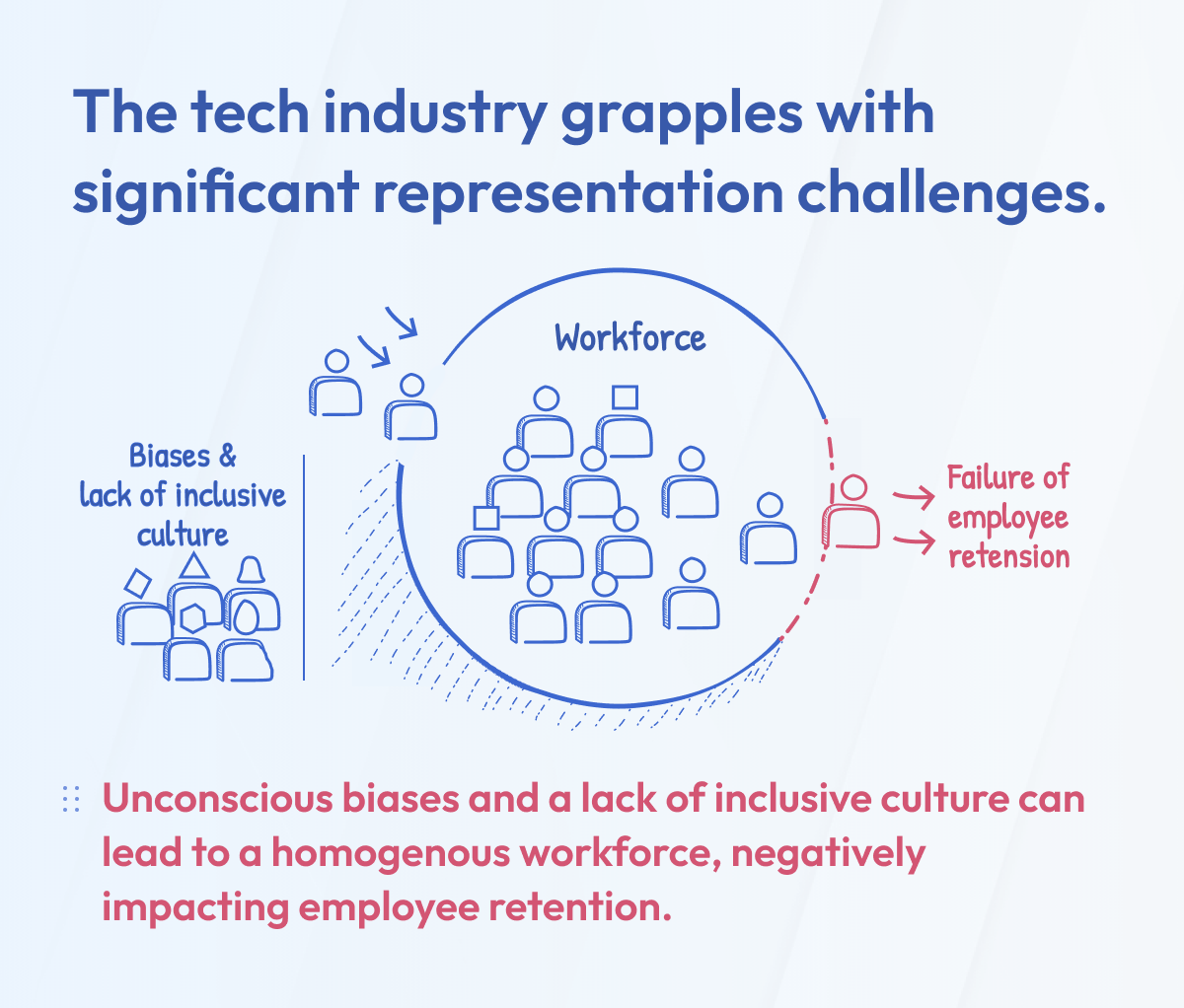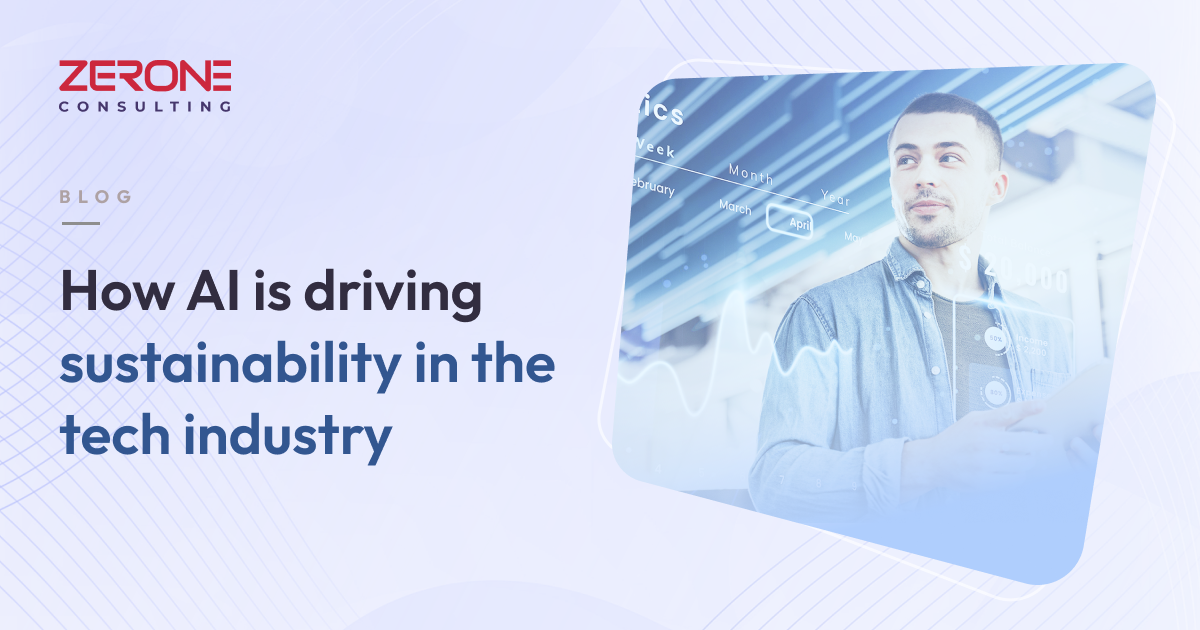Harnessing the Power of Diversity and Inclusion for Employee Retention in Tech
The tech industry, with ground-breaking products and disruptive, innovative services, is a major catalyst for change in our modern society. However, let’s not forget that the diverse minds behind the industry are driving innovation. Diversity and inclusion have evolved from corporate buzzwords into indispensable elements of a successful business strategy. Take IBM, for instance, a tech giant consistently performing well in diversity and inclusion indices, with a correlating high employee retention rate.

The State of Diversity and Inclusion in Tech: Stats and Trends
Despite making progressive strides, the tech industry still has significant gaps in diversity and inclusion. The Kapor Center’s 2022 study reveals that women only account for about 26% of computing-related occupations, with even lower figures for racial and ethnic minorities. However, an increasing number of companies recognize the invaluable contributions of a diverse workforce. A testament to this shift is Accenture, committed to achieving a gender-balanced workforce, which raised the female representation from 36% to 44% by the end of 2022.

The Impact of Diversity and Inclusion on Employee Retention
Diverse and inclusive work environments enhance employee satisfaction, commitment, and, ultimately, retention. McKinsey & Co’s research indicates that companies in the top quartile for racial and ethnic diversity are 35% more likely to have financial returns surpassing their respective national industry medians. Australian Software Firm Atlassian serves as an ideal success story. After implementing comprehensive diversity and inclusion strategies, they noticed a significant increase in employee engagement and retention over the past few years.

Challenges in Achieving Diversity and Inclusion
However, achieving diversity and inclusion isn’t as easy as it sounds. Tech companies often wrestle with unconscious biases, lack of representation, and creating an inclusive culture. These hurdles can inadvertently lead to a homogeneous workforce, negatively impacting employee retention. By actively addressing these issues through comprehensive unconscious bias training programs, Google offers a beacon of hope, leading to a more inclusive work culture.

Best Practices for Fostering Diversity and Inclusion
Promoting diversity and inclusion involves several vital strategies:
-
Set a Clear Vision and Strategy: Creating a strategic plan with clearly defined objectives, KPIs, and timelines can steer diversity and inclusion initiatives in the right direction. This plan should be communicated transparently to all employees.
-
Foster an Inclusive Culture: Building an environment where everyone feels valued and understood is critical. This involves promoting open dialogue, establishing zero-tolerance policies for discrimination, and celebrating diverse cultural events.
-
Address Unconscious Bias: Regular training programs can help employees identify and overcome their inherent biases. This contributes to a more fair and balanced decision-making process.
-
Ensure Equitable Hiring and Promotion Practices: Diversity should be promoted at all levels of the company when it comes to management and the workforce. This requires unbiased recruitment and promotion processes, potentially involving blind recruitment practices and diverse interview panels.
-
Offer Flexible Work Arrangements: Flexibility can attract and retain a diverse workforce. Consider options such as remote work, flexible hours, or job sharing.
-
Conduct Mentoring and Sponsorship Programs: These initiatives ensure that all employees have access to growth opportunities. They can be significant for underrepresented groups that may lack role models in senior positions.
Strategies in Action: Case Studies of Diversity and Inclusion Initiatives
Organizations that are committed to fostering diversity and inclusion often employ a range of innovative strategies. Here are some case studies that spotlight how various companies have championed diversity and inclusion within their workplaces:
Intel Corporation, a leader in the semiconductor industry, launched its comprehensive ‘Diversity in Technology’ initiative in 2015, with a commitment to achieve full representation of women and underrepresented minorities in its U.S. workforce by 2020. They invested $300 million into this program to expand their diversity initiatives and grow the pipeline of women and underrepresented minorities in the technology and gaming industries. They achieved their goal two years ahead of schedule, and have now shifted their focus to sustaining this momentum and continuing to drive change within the tech industry.
Salesforce, the cloud-based software company, is known for its “Equality for All” ethos. They focus on four key areas: Equal Pay, Equal Opportunity, Equal Education, and Equal Rights. Salesforce has been transparent about its pay gap and has spent around $10.3 million since 2016 to eliminate any significant pay differences between genders and races. The company also provides resources and opportunities for employees to grow irrespective of their backgrounds, fostering an environment of inclusivity and belonging.
HubSpot, a leading growth platform, created a comprehensive and influential “Culture Code”. This code, which is publicly accessible, details their commitment to inclusivity, transparency, flexibility, and creating a sense of belonging for all employees. Their ongoing diversity report, which tracks the company’s progress in these areas, is a testament to their commitment to creating a diverse and inclusive work environment.
By examining these case studies, it’s clear that a dedicated and systemic approach to diversity and inclusion can lead to significant improvements not only in employee representation but also in job satisfaction and retention
Anticipating the Future of Diversity and Inclusion in Tech
As we look ahead, diversity and inclusion are expected to gain more prominence. Future-forward companies will incorporate these aspects as key business strategies, driving societal and business value. This shift is expected to catalyze a positive change in employee retention rates. As tech companies gear up for this inclusive future, strategic tools and practices, such as inclusive leadership training, mentorship programs, and AI-enhanced diversity hiring practices, could prove instrumental.
Conclusion
In conclusion, the tech industry cannot overlook the profound impact of diversity and inclusion on employee retention. The time is right for a call to action by tech leaders to prioritize diversity and inclusion initiatives as strategic imperatives for success.
References
-
McKinsey & Company. (2020). Delivering through diversity.
-
Kapor Center. (2022). The Leaky Tech Pipeline report.
-
Accenture. (2022). Getting to Equal 2022: The Hidden Value of Culture Makers.
-
Google. (2017). Unconscious Bias @Work.
-
Microsoft. (2022). Diversity and Inclusion Report.
We can help!
The Green Revolution: A Tale Of Technology Giants Striding Toward Sustainability
#Customapplicationdevelopment
Streamlining Software Development: From Proof Of Concept To Continuous Learning
#Customapplicationdevelopment
How Ai Is Driving Sustainability In The Tech Industry
#Customapplicationdevelopment



